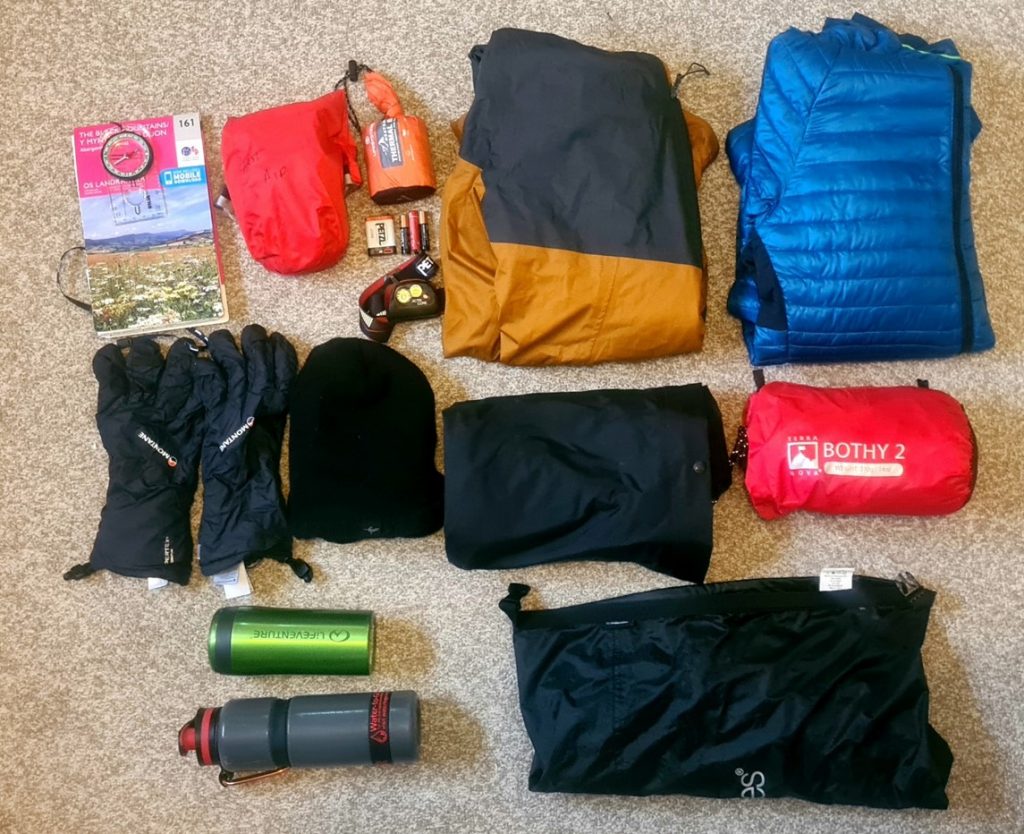
What I Pack for a One-Day Hiking Adventure – Essential Gear & Safety Tips
When I’m out in the mountains, people often ask what I carry in my daypack when hiking. The usual response is, “Surely you don’t need all that for one day?”
The truth is, much of what I pack isn’t for regular use – it’s for the “just in case” moments. Being prepared in the hills can make the difference between an enjoyable hike and a dangerous situation. In this blog, I’ll walk you through exactly what I carry on a one-day hiking adventure in the UK, and why each item earns its place in my pack.
1. Waterproofs
I always carry a waterproof jacket and trousers. In the UK, rain is almost a given, and staying dry is crucial for both comfort and safety. Staying dry helps regulate body temperature and reduces the risk of hypothermia.
Tip: Put them on before you get wet – easier said than done, I know!
2. Food
I pack enough food for the whole day, plus an emergency extra snack. My go-to is a mix of cashew nuts and raisins for grazing, a wrap or sandwich for lunch, and a few cereal bars. I also carry a bag of sweets for an energy boost near the end of the hike or when morale dips.
Tip: Always pack one more snack than you think you’ll need – hikes often take longer than planned.
3. Water & Hot Drinks
Hydration is essential. I often carry a water bottle with a built-in filter so I can top up from natural water sources. On colder days, I also bring a flask of coffee for a warm boost.
4. Torch / Headlamp
I carry a head torch in a dry bag with spare batteries. Even with perfect planning, unexpected delays can mean finishing in the dark. Navigating without light is risky and exhausting.
5. Mobile Phone
A fully charged phone is a must. It’s not just for photos – it’s a lifeline in emergencies.
6. Map & Compass
I print my route map, laminate it (or use a plastic wallet), and keep it handy in my pocket. I also carry a full OS map (1:50,000 or 1:25,000) in my pack as a backup. GPS is great, but batteries fail – paper doesn’t.
7. Spare Warm Layer
A spare warm layer, stored in a dry bag, lives at the bottom of my rucksack. It’s not for walking in, but for emergencies where I need to be stationary for a while.
Tip: If you need it while moving, you may need to reassess your layering system.
8. Hat & Gloves
I carry these year-round. They usually come out on descents when my body temperature drops. A cap is also handy – it keeps sun and rain out of your face when worn under a hood.
9. First Aid Kit & Survival Blanket
These stay in my pack at all times. A basic first aid kit can handle small injuries before they escalate. A survival blanket adds extra warmth in emergencies.
Tip: In summer, add sunscreen to this kit.
10. Storm Shelter
This comes with me when I’m guiding or walking with others. It’s invaluable in bad weather and makes a great lunch spot on wet days.
11. Dry Bags
Every item above is packed into dry bags to keep it safe from rain. Bin bags can work in a pinch, but they’re less reliable.
Final Thoughts
Much of what I carry I hope never to use. But mountain weather changes quickly, and small incidents can escalate fast. Whether you’re new to hiking or a seasoned mountaineer, being prepared is key to safe and enjoyable adventures.


Leave a Reply